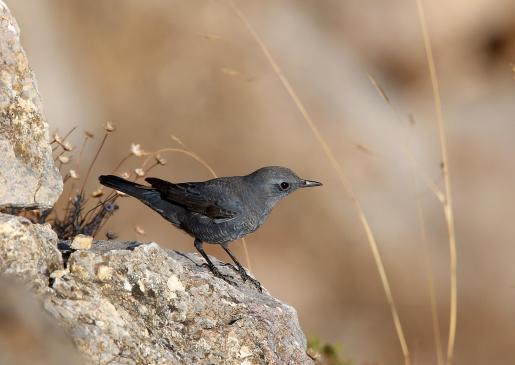Identification
The male is all black with a characteristic orange-yellow beak and eye ring (skin around the eye). Females and juveniles are brown with a pale chest and neck and also a brown beak. It has somewhat large and strong, dark-coloured legs and a relatively long tail.
Distribution - Habitat
The Common blackbird spreads to Europe (up to Scandinavia and Iceland), West Asia (up to West China), the Middle East and the North African coast. Its populations in W Europe are resident but those in the East are migratory: in spring they move into W and NE Europe (as far as western Russia) and in winter south to areas with resident populations (including ours!) and also a little to the east (as far as Pakistan).
It lives in areas with forests, tall shrubs, tree crops, parks, etc. or in adjacent open areas with tree cover.
Interesting Information
- It feeds on worms, insects (and their caterpillars) and other small invertebrates (snails in humid climates) and fruits and seeds. In winter in the Mediterranean region it especially prefers olives!
- The male sings from an elevated point very melodically and complexly: up to 100 different phrases have been recorded in one population.
- It usually lays 3-4 eggs that are greenish-blue in colour and have brown spots that hatch for about 14 days. The chicks remain in the nest for another few days and then remain with their parents (family group) for 20 days.


